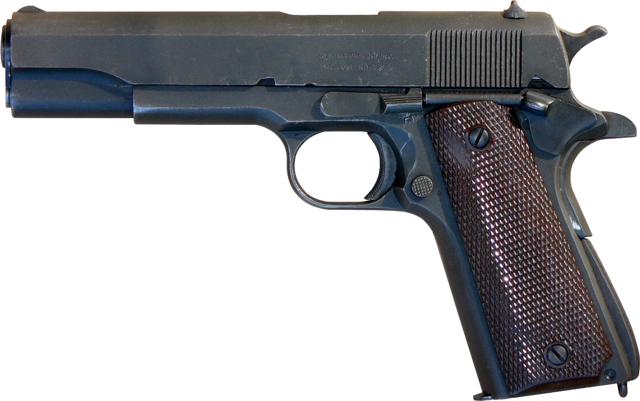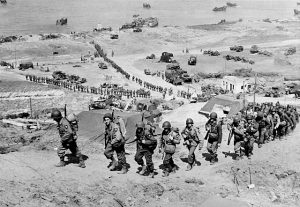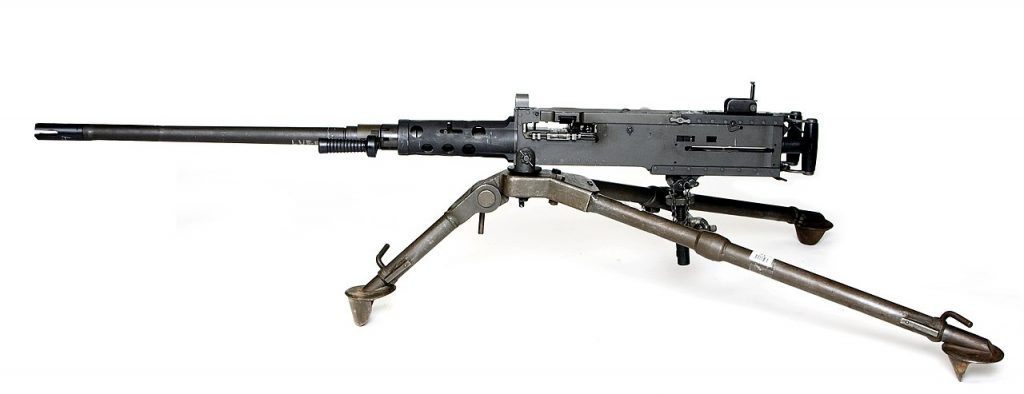U.S. WW2 Weapons
U.S. WW2 Weapons
Overview
>> Rifles
The M1 carbine (formally the United States Carbine, Caliber .30, M1) is a lightweight semi-automatic carbine that was a standard firearm for the U.S. military during World War II, the Korean War and the Vietnam War. The M1 carbine was produced in several variants and was widely used by paramilitary and police forces around the world, and also became a popular civilian firearm after World War II. (103)
| Type | M1, semi-automatic carbine M2/M3, selective-fire carbine |
| In Service | 1942–1973 (U.S.) |
| No. Built | 6,121,309 (WWII) |
| Cartridge | .30 Carbine |
| Action | Gas-operated (short-stroke piston), rotating bolt |
| Rate of Fire | 0–70 aimed rounds/min (M1/A1) 750 rounds/min (M2) |
The principal U.S. service rifle of WWII, the M1 Garand proved to be effective and reliable although complicated and expensive to manufacture.
The M1 was self-loading and could be fired as quickly as the trigger could be pulled. With its accuracy and high rate of fire it became the preeminent battle rifle of the war. General Patton called the M1 Garand “the greatest battle implement ever devised.” (112)
| Type | Semi-automatic rifle |
| In Service | 1936–1958 (as the standard U.S. service rifle |
| No. Built | 5,468,772 |
| Cartridge | .30-06 Springfield (7.62×63mm) 7.62×51mm NATO (.308 Winchester) (Postwar use by U.S. Navy) |
| Action | Gas-operated, rotating bolt |
| Rate of Fire | 40–50 rounds/min |
>> Machine guns
The US Army, in practice, used the BAR, .30-06 Springfield cartridge, as a light machine gun, often fired from a bipod. The M1918 is a selective-fire, air-cooled automatic rifle using a gas-operated, long-stroke piston rod actuated by propellant gases bled through a vent in the barrel. [202]
The M1941 Johnson Light Machine Gun, also known as the Johnson and the Johnny gun,[1] was an American recoil-operated light machine gun designed in the late 1930s by Melvin Johnson. It shared the same operating principle and many parts with the M1941 Johnson rifle and the M1947 Johnson auto carbine. [212]
At the outbreak of the Second World War, the United States had versions of the M2 in service as fixed aircraft guns, anti-aircraft defensive guns (on aircraft, ships, or boats), infantry (tripod-mounted) guns, and as dual purpose anti-aircraft and anti-vehicular weapons on vehicles [222]
>>Sidearms

Picture credit: (P301)
The U.S. military procured around 2.7 million M1911 and M1911A1 pistols during its service life. The pistol served as the standard-issue sidearm for the United States Armed Forces from 1911 to 1985. It was widely used in World War I, World War II, the Korean War, and the Vietnam War. [302]
REFERENCES
Picture Credits:
- (P1) Public Domain, https://commons.wikimedia.org/w/index.php?curid=670802
- (P101) By Armémuseum (The Swedish Army Museum) – Armémuseum (The Swedish Army Museum) through the Digital Museum (http://www.digitaltmuseum.se), Public Domain, https://commons.wikimedia.org/w/index.php?curid=17928224
- (P110) By Armémuseum (The Swedish Army Museum) – Armémuseum (The Swedish Army Museum) through the Digital Museum (http://www.digitaltmuseum.se)., CC BY-SA 4.0, https://commons.wikimedia.org/w/index.php?curid=80282243
- (P211) By The original uploader was Fab-pe at Portuguese Wikipedia. – Transferred from pt.wikipedia to Commons., Public Domain, https://commons.wikimedia.org/w/index.php?curid=2573121
- (P221) By Photo Courtesy of PEO Soldier – https://www.flickr.com/photos/peosoldier/4277416638/sizes/l/in/set-72157621946887368/, Public Domain, https://commons.wikimedia.org/w/index.php?curid=65414234
- (P301) By M62 – This file was derived from: M1911 A1 pistol.jpg, CC BY-SA 3.0, https://commons.wikimedia.org/w/index.php?curid=30214051
Text Credits:
- ** Top Image: The USS Yorktown is hit on the port side by a torpedo launched from a plane off the Japanese aircraft carrier Hiryu during the Battle of Midway on June 4, 1942. (Image: National Archives and Records Administration, 80-G-414423.)
- (2) https://www.si.edu/spotlight/wwii-aircraft
- (3)https://aerocorner.com/blog/airplanes-in-ww2/#:~:text=During%20WW2%2C%20the%20primary%20missions,similar%20airplanes%20filled%20multiple%20roles.
- (101) http://www.aviation-history.com/curtiss/p40.htm
- (110) http://www.pwencycl.kgbudge.com/F/4/F4F_Wildcat.htm — accessed: 02-12-2022
- (112) https://worldwar2headquarters.com/HTML/weapons/american/garand.html
- [202] https://en.wikipedia.org/wiki/M1918_Browning_Automatic_Rifle
- [212] https://en.wikipedia.org/wiki/M1941_Johnson_machine_gun
- (302) https://en.wikipedia.org/wiki/M1911_pistol
Resources / Websites
- https://worldwar2headquarters.com/HTML/weapons/american/garand.html
- https://en.wikipedia.org/wiki/List_of_aircraft_of_World_War_II
- https://www.militaryfactory.com/
- http://acepilots.com/planes
- The Pacific War Online — http://www.pwencycl.kgbudge.com/F/4/F4F_Wildcat.htm
- Smithsonian Museum — https://www.si.edu/spotlight/wwii-aircraft
- https://www.warhistoryonline.com
- http://www.aviation-history.com/







